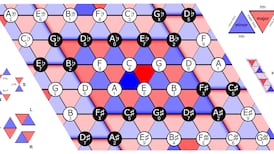Stargazers across the Ireland have observed a blood red 'supermoon' for the first time in 30 years.
The eerie light created from a lunar eclipse with the moon near to its closest point to the Earth delighted amateur astronomers and photographers.
The spectacle began to unfold at around 1am with the ‘total’ phase - when the moon is in shadow - lasting from around 1am to 4am. The moment of greatest eclipse was at 3.49am.
0 of 4
The phenomena continued until the moon emerged from the Earth’s shadow after 6am. Cloud cover over Ireland on Monday morning was minimal, meaning the event could be seen from most parts of the country.
There has not been a total eclipse of the moon in Ireland since 2010 and the next one is on July 27th, 2018, but it is at sunset so it will be more difficult to see.
The next comparable event will not be until the early hours of the morning of December 20th, 2029.
When the moon is at perigee, its shortest distance from the Earth, it is 363,711kms away and appears 14 per cent larger and 30 per cent brighter than when it is at its furthermost point. The last time this coincided with a lunar eclipse, when the moon is covered by the Earth’s shadow, was in 1982 and the event will not be repeated until 2033.
During a lunar eclipse, the moon turns a deep rusty red, due to sunlight being scattered by the Earth’s atmosphere. Through the ages, so-called ‘blood moons’ have been viewed as ill omens by superstitious people.
Dozens of amateur photographers posted their best efforts on social media, although those taking pictures on their phones were mostly disappointed.
Astronomy Ireland held an eclipse watch between 2am and 6am at its offices in the Rosemount Business Park in Blanchardstown, Dublin.
Astronomy Ireland magazine editor David Moore said: "If you don't like the prospect of getting up in the middle of the night to see this amazing spectacle of the full Moon dropping in brightness by nearly a million times, our calculations show that you will have to wait until December 20th 2029 to see the next total eclipse of the moon from Ireland in an evening sky.
“We are advising every working person in Ireland to book a day’s holiday for Monday so they can stay up late Sunday night and watch the entire eclipse.”
The total eclipse of the moon was visible across the whole of western Europe and West Africa along with the whole of the Americas. The best place to watch was off the coast of Brazil.
It will not be the only significant astronomical event on Monday. Nasa has called a press conference for Monday afternoon. The space agency has said it will reveal details of a "major science finding from the agency's ongoing exploration of Mars".
The presence of Lujendra Ojha, a scientist with the Georgia Institute of Technology in Atlanta, at the press conference suggests that Nasa will announce that it has found flowing water on the surface of Mars.
Such a discovery would confound the belief that Mars is too cold and inert to allow for flowing water on the surface.
The presence of flowing water would also suggest that Mars would have a much greater chance of harbouring microbial life.













